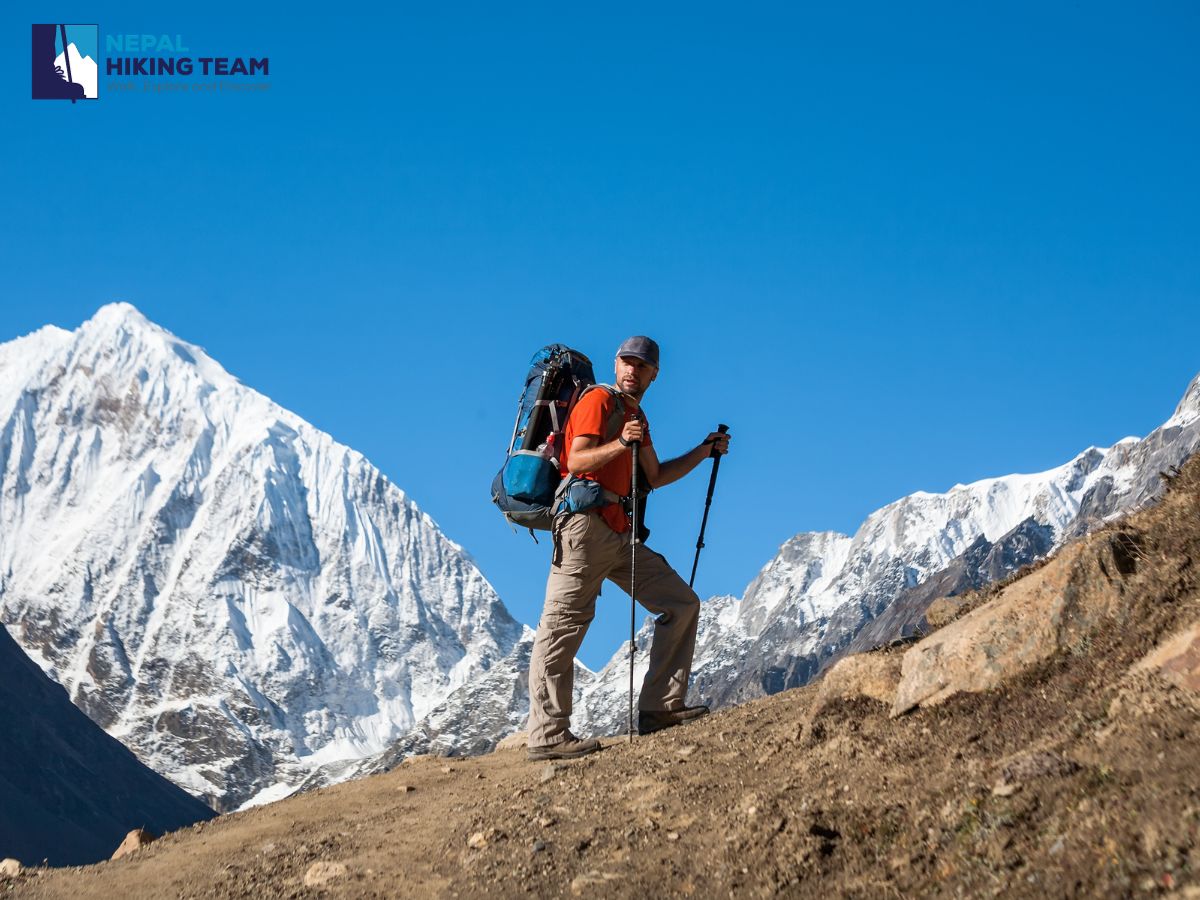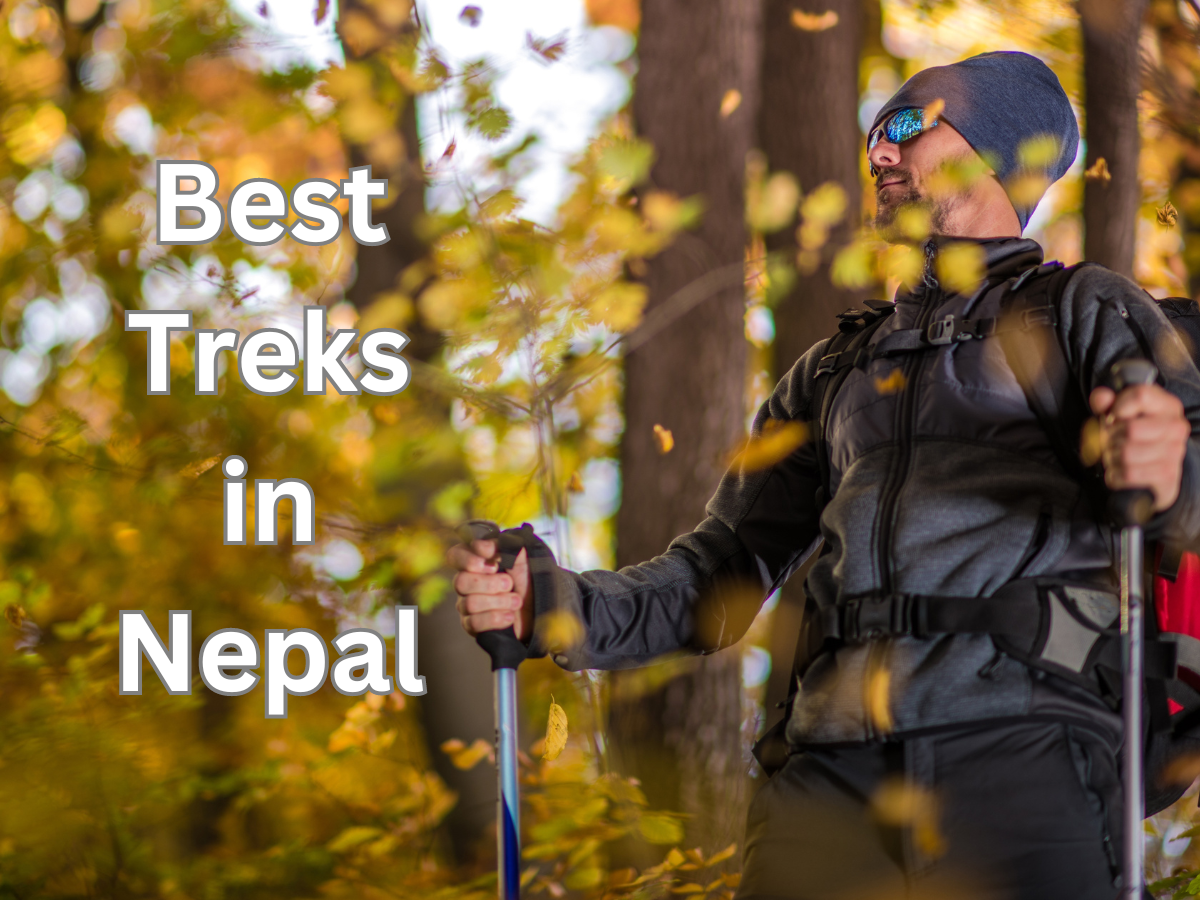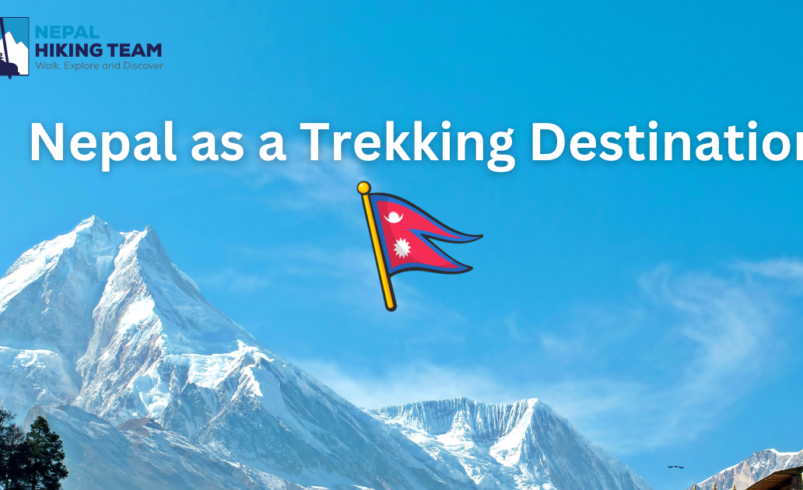I. Introduction
A. Overview of Trekking in Nepal
Nepal, which offers a wide variety of trekking adventures, is a paradise for adventure seekers, tucked away in the heart of the Himalayas. The nation is a top choice for hikers from all over the world because of its breathtaking scenery, diverse cultural heritage and friendly people.
B. Nepal as a Trekking Destination
Nepal’s significance as a trekking destination is unparalleled. It boasts eight of the world’s fourteen highest peaks, including the iconic Mount Everest, drawing intrepid travelers seeking the thrill of conquering these majestic summits. The Himalayan trails provide an immersive experience, blending nature’s grandeur with cultural richness.
C. Connecting with Nature: The Essence of Trekking
Trekking in Nepal transcends physical activity; it’s a spiritual journey, a communion with nature. The rhythmic cadence of footsteps echoing through lush forests, crossing ancient bridges and witnessing awe-inspiring vistas fosters a deep connection with the environment.

II. Everest Base Camp Trek
A. Introduction to Everest Base Camp Trek
1. Overview of the Everest Region: The Everest Base Camp Trek is an iconic journey that unfolds in the Khumbu region, offering breathtaking views of Everest and neighboring peaks.
2. Key Highlights and Attractions: From the vibrant Sherpa culture to the thrilling ascent of Kala Patthar, every step resonates with adventure.
B. Preparation and Planning
1. Fitness Requirements: Prioritize cardiovascular fitness and endurance to tackle high altitudes.
2. Essential Gear Checklist: Pack wisely, including layers, trekking poles and a reliable pair of boots.
3. Permits and Regulations: Familiarize yourself with necessary permits like the TIMS card and Sagarmatha National Park entry.
C. The Trek Itself
1. Detailed Itinerary: Embark on a 12-day journey through picturesque villages, monasteries and the Khumbu Glacier.
2. Accommodation and Teahouse Experience: Embrace the warmth of teahouse hospitality, a unique aspect of Everest trekking.
3. Challenges and Rewards: Overcoming altitude challenges is rewarded with unparalleled views and a sense of accomplishment.
D. Safety Tips and Guidelines
1. Altitude Sickness Awareness: Recognize symptoms and acclimatize properly to minimize risks.
2. Emergency Protocols: Stay informed on evacuation procedures and communicate any health concerns promptly.

III. Annapurna Base Camp Trek
A. Unraveling the Annapurna Region
1. Annapurna’s Magnificence: The Annapurna Base Camp Trek offers a close encounter with the majestic Annapurna range and Machapuchare.
2. Unique Features of the Annapurna Base Camp Trek: Traverse diverse landscapes, from rhododendron forests to alpine meadows.
B. Preparing for the Adventure
1. Physical and Mental Preparation: Strengthen leg muscles and cultivate mental resilience for varied terrains.
2. Packing Essentials: Carry essentials like a good sleeping bag, lightweight clothing and a reliable backpack.
3. Necessary Permits and Documentation: Obtain necessary permits, including the ACAP and TIMS card, for a smooth journey.
C. Journey through the Annapurna Sanctuary
1. Day-by-Day Itinerary: Experience the magic of the sanctuary, exploring Gurung villages and hot springs.
2. Teahouse Culture and Local Hospitality: Engage with local communities, enjoying the warmth of their hospitality.
D. Safety Considerations
1. Terrain Challenges: Navigate through challenging terrains, including steep ascents and descents.
2. Health and Emergency Preparedness: Prioritize personal well-being, and be aware of emergency procedures.
Suggested: Annapurna Base Camp Trek

IV. Manaslu Circuit Trek
A. Exploring the Manaslu Region
1. Introduction to the Manaslu Circuit: Discover the raw beauty of the Manaslu region, less frequented but equally spectacular.
2. Cultural and Natural Wonders: Encounter diverse ethnic groups and pristine landscapes.
B. Pre-Trek Planning
1. Physical Conditioning: Prepare for the demanding trails with a focus on endurance and strength.
2. Packing Tips and Gear Essentials: Equip yourself with essentials like a sturdy tent, warm layers, and trekking poles.
3. Permits and Restrictions: Adhere to strict permit regulations for the restricted region.
C. Trekking Through the Manaslu Circuit
1. Detailed Itinerary and Routes: Traverse through remote villages and witness the splendor of Mount Manaslu.
2. Unique Experiences along the Trail: Immerse yourself in the unique cultural practices and traditions of the region.
D. Safety Measures
1. Altitude-Related Challenges: Understand the signs of altitude sickness and prioritize acclimatization.
2. Emergency Response Procedures: Be aware of evacuation routes and communication channels for emergencies.
Want to Trek in Manaslu Circuit?
If Yes, Then Visit: Manaslu Circuit Trek

V. Best Treks in Nepal
A. Overview of Top Trekking Destinations
1. Diverse Landscapes and Cultural Richness: Explore the diversity of Nepal’s landscapes, from lush valleys to arid highlands.
2. Tailoring the Trek to Personal Preferences: Choose a trek that aligns with your interests, whether cultural immersion or challenging ascents.
B. Comparative Analysis of Popular Treks
1. Difficulty Levels: Gauge the difficulty levels of popular treks, from beginner-friendly to advanced.
2. Scenic Beauty and Cultural Immersion: Compare the visual allure and cultural experiences each trek offers.
C. Tips for Choosing the Right Trek
1. Assessing Personal Fitness and Experience: Match your trek to your fitness level and previous trekking experience.
2. Seasonal Considerations: Understand the impact of seasons on different trekking routes for an optimal experience.
See: Best Treks in Nepal

VI. How to Trek in Nepal
A. Step-by-Step Guide for Aspiring Trekkers
1. Researching and Selecting a Trek: Explore Trekking Blogs, guidebooks and recommendations to choose a trek aligned with your preferences.
2. Preparing Physically and Mentally: Develop a training plan, including cardiovascular exercises and mental preparation.
3. Organizing Necessary Permits and Documents: Ensure all required permits and documents are in order before embarking on your trek.
B. Guided vs. Independent Trekking
1. Pros and Cons of Guided Tours: Enjoy the convenience of guided tours, balanced with the freedom of independent exploration.
2. Self-Guided Adventures: Challenges and Rewards: Embrace the challenges of independent trekking for a more immersive experience.
C. Responsible Trekking Practices
1. Leave No Trace Principles: Minimize environmental impact by adhering to Leave No Trace principles.
2. Supporting Local Communities: Contribute positively to local economies by choosing locally-owned accommodations and services.
Suggested:-How to trek in Nepal (Top 6 Best Tips and Guide)
VIII. Conclusion
As you embark on the trails of Nepal, you’ll unlock treasures beyond the physical landscapes – the warmth of local communities, the serenity of ancient monasteries, and the profound sense of accomplishment.
For those seeking adventure, Nepal offers not just physical challenges but an invitation to discover the untamed beauty of the Himalayas and the resilient spirit of its people.
As the sun sets behind towering peaks and you reflect on your journey, remember that each step in Nepal leaves an indelible mark – a memory etched against the backdrop of the world’s highest mountains.











